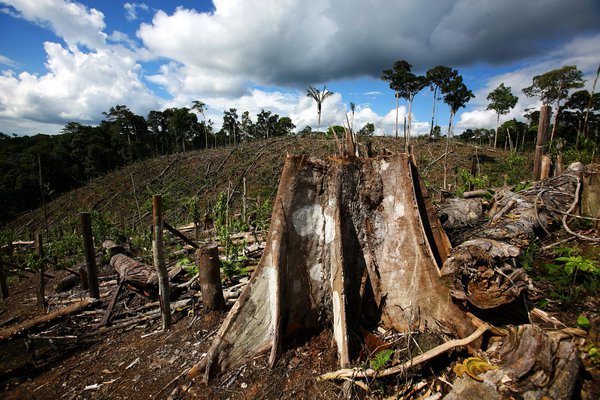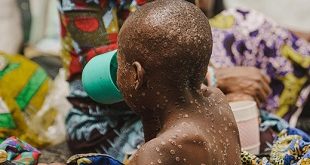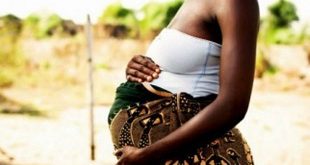
Kampala, Uganda | PATRICIA AKANKWATSA | As the world celebrated the International Day for Biological Diversity (IDB) May 22, Ugandan experts have called for a new focus to address the negative impacts of infrastructure development on biodiversity particularly at ecosystem and species safety level.
According to Francis Ogwal, the Head of Biodiversity at the National Environment Management Authority (NEMA), Uganda is witnessing unprecedented degradation of the environment which is leading to loss of biodiversity and these include loss forest, reclamation and degradation of wetlands, pollution and loss of species among others.
The Secretariat of the Convention on Biological Diversity (CBD) has announced “We’re part of the solution” as the theme for the year.
“The choice of the national theme for IDB 2021 is meant to mobilize all Ugandans to take and sustain concrete action to restore the environment especially focusing on forests, wetlands and species of wild plants (flora) and wild animals (fauna). The UN has declared 2021 -2030 the Decade for Ecosystem Restoration”. Thus, the national theme is timely to put Uganda on course to begin a serious and sustained programme of restoration of ecosystems in Uganda”
David Duli, WWF Country Director notes that with the drive to achieve the middle income status by 2020 (NPA, 2013 and NPA, 2015), there has been a tremendous drive in infrastructural development and therefore a need to address the negative impacts of infrastructure development on biodiversity particularly at ecosystem and species safety level.
Our planet is losing animal and plant species at an alarming rate, and an urgent reversal of this #biodiversity loss is critical to our shared future. #BiodiversityDay #IBD
#IDB2021 @UNEP @WWF @UNBiodiversity
Image: @UN / https://t.co/NdyUq4ZS1k #ForNature @IPUparliament pic.twitter.com/uwRgkMFvRM
— Sven Spengemann (@SvenTrueNorth) May 23, 2021
THEME: We’re part of the solution
The CBD says that this year’s theme is a continuation of the momentum generated last year through the slogan: “Our solutions are in nature”, which served as a reminder that biodiversity remains the answer to several sustainable development challenges.
Uganda ratified the Convention on Biological Diversity (CBD) on 8th September 1993. The Convention entered into force on 29th December 1993. To-date 196 countries are Parties to the CBD making the CBD of the Conventions with the biggest number of Parties.
According to a study by WWF Uganda under the BIODEV 2030 project, Uganda is one of Africa’s richest countries in biodiversity despite its relatively small size. It has diverse ecosystems consisting of forests, wetlands, rangelands, lakes and rivers. The country has 53% of the world’s mountain gorillas, 11% of the global recorded species of birds, 7.8 % of global mammalian species, 19% of Africa’s amphibians and 14% of African reptilians.
There are however a number of threats leading to loss of biodiversity including conversion of natural habitats to agricultural land and infrastructural development.
David Duli, WWF Country Director notes that with the drive to achieve the middle income status by 2020 (NPA, 2013 and NPA, 2015), there has been a tremendous drive in infrastructural development and therefore a need to address the negative impacts of infrastructure development on biodiversity particularly at ecosystem and species safety level.
When we safeguard #biodiversity, we support the health of:
Nature
Climate
People
Discover how implementing a biodiversity-inclusive #OneHealth approach is part of the solution #ForNature.
https://t.co/XZ1GYU3H5x#BiodiversityDay #WHA74 pic.twitter.com/EVzWXxrGJE
— UN Biodiversity (@UNBiodiversity) May 24, 2021
Other threats to biodiversity include proliferation of invasive species, human-wildlife conflict, illegal wildlife trade, climate change, and pollution to mention but a few.
WWF believes that biodiversity loss is not only an environmental issue, but a developmental, economic, health, social and moral issue.
“We now call upon our Government to join the coalition to create a global biodiversity framework that is a tool for transformative change. To achieve this, we need leadership at the highest level of state or government in both its development and implementation, through a whole-of-government approach. All government ministries, not just the Ministry of Environment, need to unite behind an ambitious mission, goals and targets that remove the sectorial drivers of biodiversity loss and decrease our ecological footprint.” David Duli noted.
WWF is implementing the BIODEV2030 project with an aim of establishing voluntary commitments to be shared and implemented by relevant stakeholders as a complement to the enforcement of the legal framework on stop biodiversity decline by 2030 and to restore biodiversity by 2050. This is done through multi-stakeholder dialogue and science-based assessment.
Status of biodiversity according to the latest National State of Environment Report 2018-2019 Forests
- Forest cover in Uganda declined, from 23.8% (4.8 million ha) in 1990 to about 9.9 % (2 million ha). Natural forests have experienced a decline in the past decades while plantation forests increased from 3% to 8% between 2010 and 2017
- Out of the 31,411.4 km2 of wetlands left country wide, 21,526.3 km2 (69%) were intact while 9,885.1 km2 (31%) were degraded
- In rural areas, wetlands are mainly degraded through subsistence and commercial agriculture as a result of poor land tenure system which leaves land fragmented
- Mbale District has the most degraded wetlands with 99% of its wetlands under threat while Ntoroko has the lowest percentage of degraded wetlands at 2%. Mbale is also prone to frequent mud and landslides
- Wildlife protected areas and forest reserves altogether constituted 18.8% of the total land area of Uganda
- In protected areas, there has been an increase in wildlife populations. For instance the number of Mountain Gorilla increased from 292 in 1995 to over 400 in 2017, the Elephant increased from about 2000 in 1996 to 5,808 in 2017, Buffaloes increased from 18,000 to 37,054, Giraffe population increased from 250 individuals in 1995 to 880 in 2017while the Chimpanzee population increased from 3,300 in 1997 to 4,950 in 2003
- However, the Grant’s gazelle registered a decline from 100 individuals in 1995 to 57 by 2017.
- The Beisa Oryx, Eastern Black rhino, Northern White rhino and the Lord derby’s Eland declined to extinction in the wild.
- Black rhinos have, however, significantly increased in captivity from 8 in 2004 to over 22
 The Independent Uganda: You get the Truth we Pay the Price
The Independent Uganda: You get the Truth we Pay the Price



